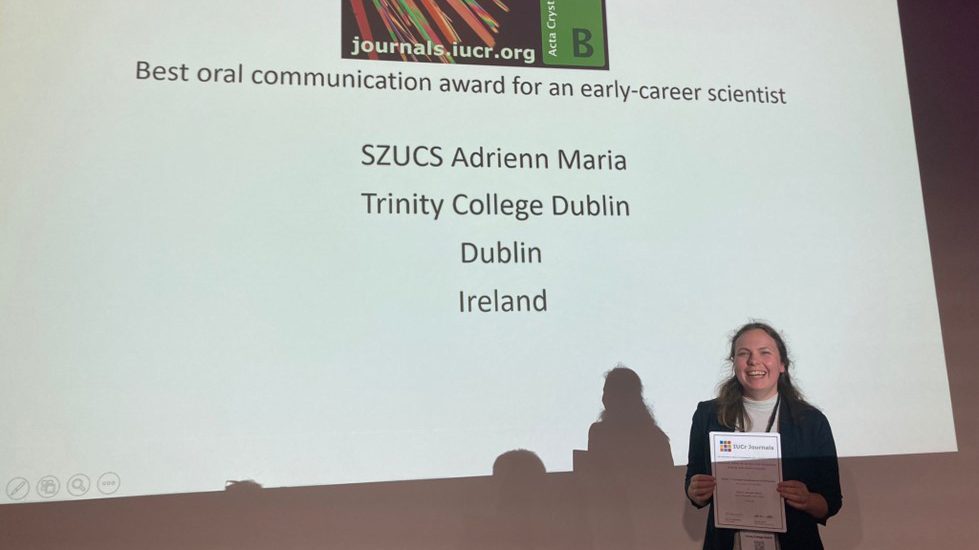
The 7th European Conference on Crystal Growth: An EAG Sponsored Student Reports Back
Attending the 7th European Conference on Crystal Growth (ECCG7), Paris, France was very special for me as this was the first conference where I was able to attend and present my work in person.
It was exciting to finally meet the scientific community closest to my research area. The schedule of the conference was heavily packed throughout the day with various interesting sessions at the same time; it was often hard to pick. ECCG7 really brought together the frontiers of crystal growth and crystallography. As an experimental geoscientist, it was interesting to hear about the new finding and approach to theoretical modelling. During the conference, I had several conversations about needed collaborations between theoretical and experimental geoscientists, and thus, I collected several contacts that might result in future collaborations.
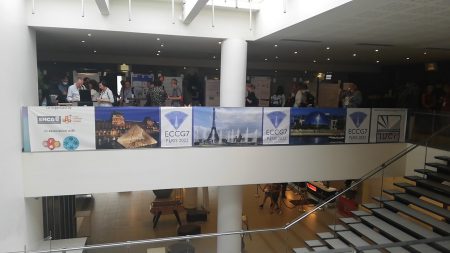
I especially enjoyed the poster sessions as this was my first in-person conference. Up until now, I only knew of poster sessions as a list of links with attached PDFs. I couldn’t really make meaning out of a three-hour poster session prior to the event, but on the first day, I learned on the spot that in fact, three hours might not be enough to fully go through the entire poster session. I have realized that presenting a poster has a lot more one-to-one interaction with no time limit on posing questions or discussions. In fact, I felt a bit frustrated I did not bring a poster myself.
My talk was in the final session of the first day of the conference: a 15 minute talk with 5 minutes designated for questions. Regardless of the late hours, I was happy to see a smaller crowd during my talk. They posed some very thrilling questions which I had the luck to answer following the session as time cut us short.
A tip for my fellow PhD colleagues: I had the chance to stay in the conference hotel and I would definitely recommend this as I found great comfort in just taking the elevator only with a notebook and a pen, instead of worrying about public transport and belongings in a foreign city.
ECCG7 was a great first in-person conference as it had ca. 130 attendees, thus the smaller size made it possible to interact more with the attendees.
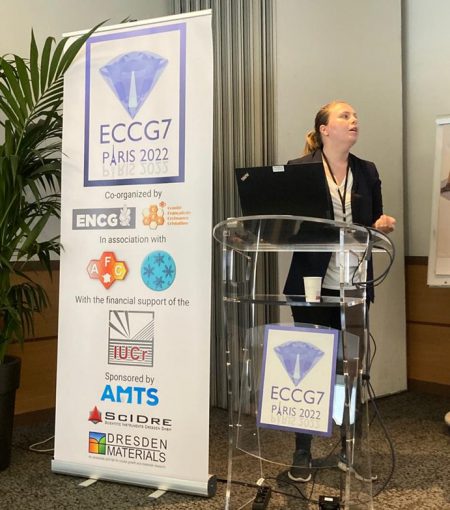
By attending ECCG7, I could expand my network, improve my presentation skills, and share and improve my research. I left ECCG7 with two prizes:
- Acta Cryst. B Prize for The Best Oral Presentation from an Early-Career Researcher
- The International Union of Crystallography Awards Young and Early Career Scientists Award
I feel very honoured and beyond thrilled for being recognized and selected for such prizes. This would not have happened without the support of EAG, who made it possible for me to attend ECCG7 by covering my registration fees. I am truly grateful for their support.
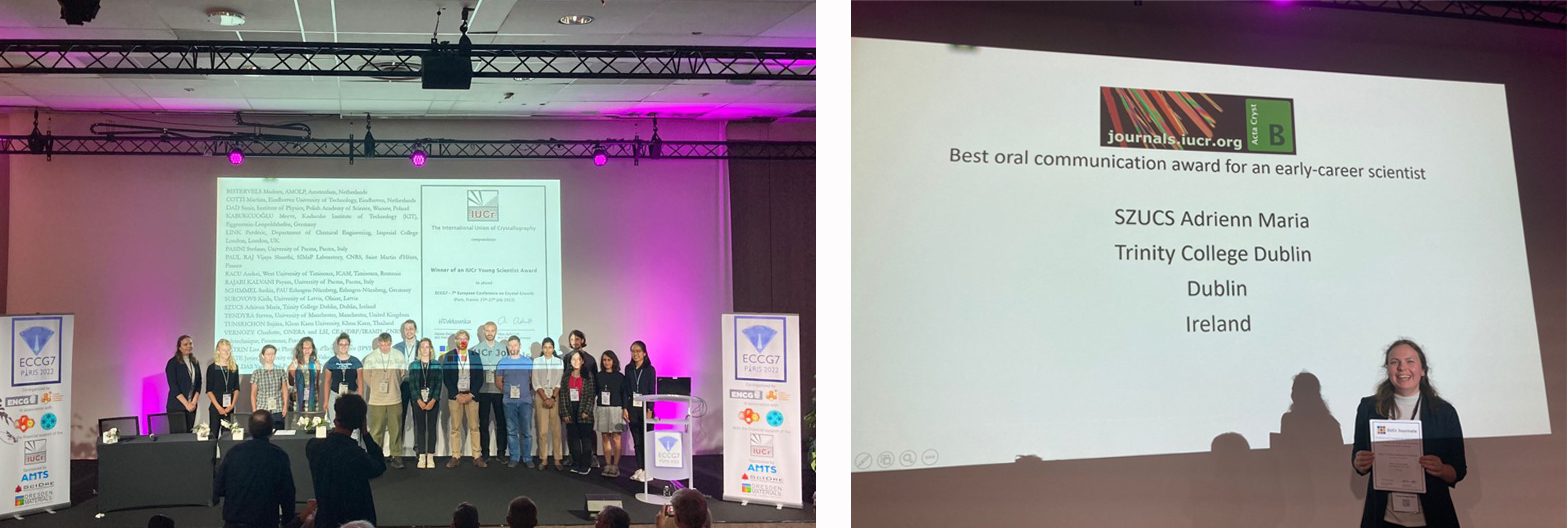
About the author
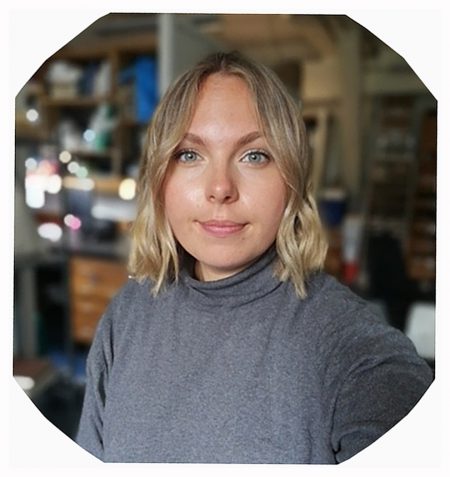
Adrienn Maria Szucs is a PhD student in Geochemistry at Trinity College Dublin. She studies the crystallization mechanisms, pathways, and chemistry of rare-earth carbonates to understand their behaviour under Earth surface and hydrothermal conditions. Her findings allow us to gain a more in-depth understanding of the formation of REE-bearing carbonates by investigating the participant factors and individual roles of REEs. This knowledge can be used to improve REE separation, exploration, exploitation and develop new recycling methods, as well as to produce carbonate minerals with tailored structures and chemistries.
